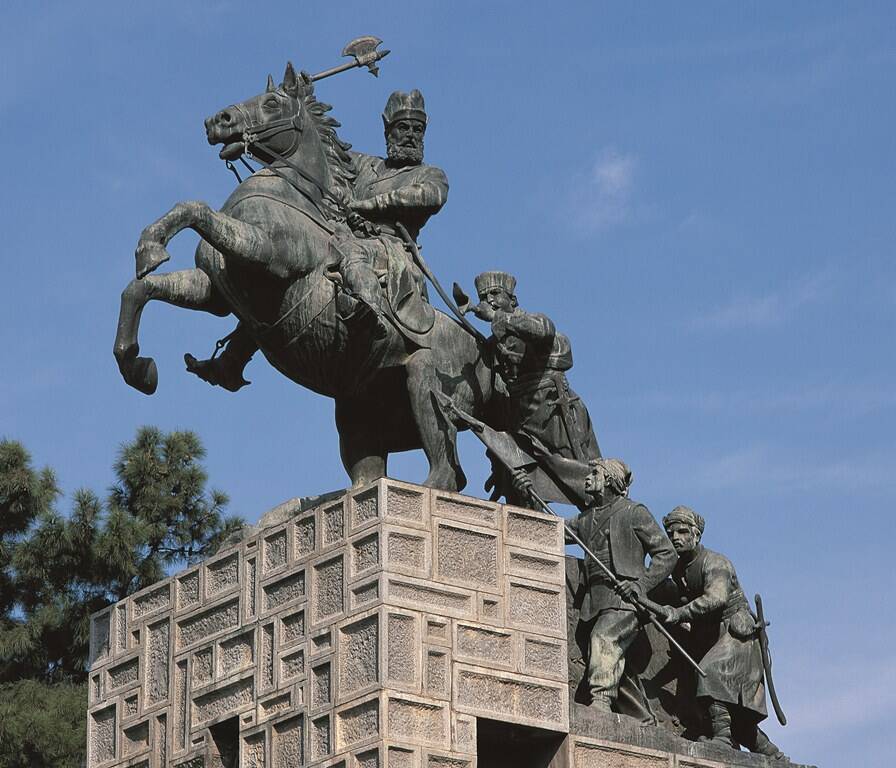Nader Shah and the Mausoleum:
Nader Shah Afshar, a powerful military leader of the Afsharid dynasty, is celebrated within this complex. Nader Shah's original desire was to have a small mausoleum akin to the Taj Mahal in India, but this vision was not realized during his lifetime.
The first mausoleum was built from mud and adobe in 1345 A.H. near Chahr Bagh Shahi, opposite the Imam Reza Holy Shrine. Later, Ghavam al-Saltaneh (1296 S.H) commissioned a new mausoleum and relocated Nader Shah's remains from Tehran.
The current mausoleum, designed by the Iranian National Art Association, was constructed in 1342 S.H. within Naderi Garden, where it stands today.
Architectural Features:
The complex follows the principles of Persian garden design, with rectangular and square forms serving as the basis for the layout. It includes water features such as watersheds, small pools, and streams.
The garden is enclosed by a granite wall with an iron fence featuring the battle axe motif.
At the entrance, visitors are greeted by a bronze statue of Nader Shah on a powerful steed, flanked by three armored foot soldiers. The statue, created by Persian sculptor Abol Hasan Sediqi, stands on a rocky stone overlooking the tomb tower.
Mausoleum Design:
The main building consists of three interconnected porches: eastern, southern, and western. It incorporates rough granite sourced from the mountainous region of Mashhad, renowned for its hardness.
The square hall of the mausoleum has two closed red walls and two open colonnades, with Nader's tomb located in a corner. The tomb's covering resembles a black nomadic tent, similar to the one where Nader was born and killed.
The columns mimic the hats worn by Afshar Gizilbash soldiers, and the Daria-i-Noor diamond, a precious gem acquired during Nader's Indian campaign, served as a model for carving the tomb.
Museum Exhibits:
The complex features two halls. The first hall displays historical objects from the Afshar period, including weaponry, military attire, paintings of Nader, and war scenes. It also houses valuable manuscripts and Nader's swords.
The second hall, added in 1373 S.H., showcases historical images and information about Nader's life, coins, artifacts spanning from Safavid to contemporary eras, and gifts related to the complex.
Peripheral Structures:
The complex also includes peripheral structures, such as a library, community hall, restroom facilities, and a greenhouse, harmoniously integrated with the overall design.
Designed by Houshang Seyhoun, the tomb of Mohammad Taghi Khan Pesyan, a Khorasan commander and one of the first trained Iranian pilots during the late Qajar period, can be found in the northern corner of the mausoleum.
The Naderi Garden Museum, overseen by the Cultural Heritage Organization, stands as a testament to Nader Shah Afshar's enduring legacy, offering visitors a profound glimpse into his life, accomplishments, and the historical context of his era within the stunning backdrop of the garden and architectural marvels.


